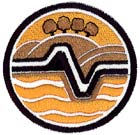A brief history of the Morris
Morris dancing certainly goes back to late mediaeval times--its earliest mention is from 1448. What the name means, we don't know, nor do we fully understand how or where it started. Theories of foreign origin have been put forward, but are by no means provable. Many of the earliest known records relate to the early 16th century English royal court, and it is just possible that there may be some connections with the courtly Morisco dances seen in continental Europe at that time. It is, however, not easy to reconstruct the dance styles of that age.
The church had been a great supporter of the Morris until the Reformation, but with the generally more serious approach taken in the later part of the 16th century, it was not very popular with the authorities. The Morris and traditional recreations experienced a renaissance in 'Merrie Englande' after the restoration of Charles II in 1660. The dances that we do now are believed to have developed primarily in the hundred years or so after this date.
However, changes in social patterns, social mobility, and types of recreation in the Victorian era meant that by the end of the 19th century the Morris had become rather unfashionable, and came very close to dying out completely. By chance, the folk song and dance collector Cecil Sharp saw the Morris at Headington on Boxing Day 1899, and he started a revival. That revival is now in its second century.
The best book on the history of the post-restoration Morris is K. Chandler, "Ribbons, Bells and Squeaking Fiddles". The social history of Morris Dancing in the English South Midlands 1660-1900, Hisarlik Press 1993. For early Morris, we suggest the weighty tome J. Forrest, A History of Morris Dancing 1458-1750. Cambridge 1999.
A briefer and more accessible summary of history and all aspects of the Morris will be found in the booklet The Morris Tradition published by the Morris Ring.
